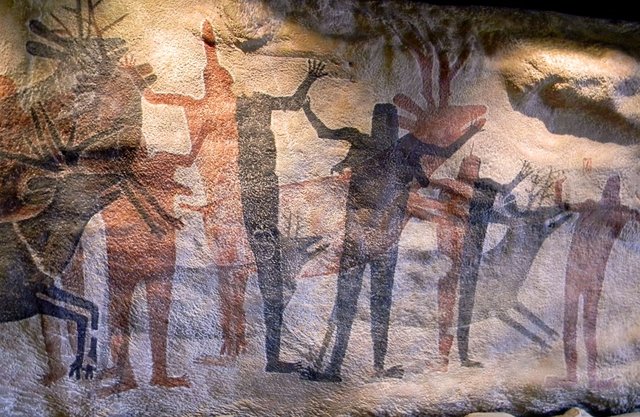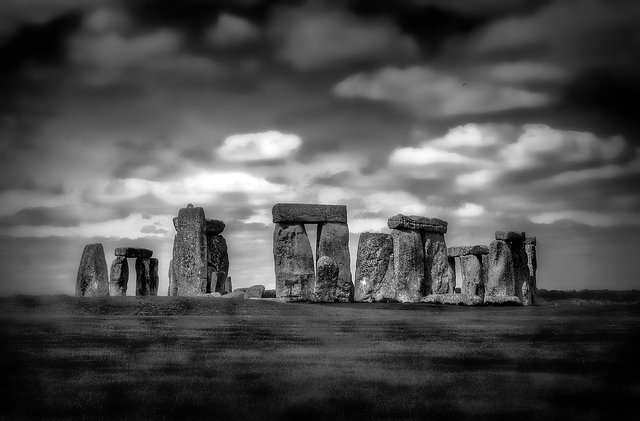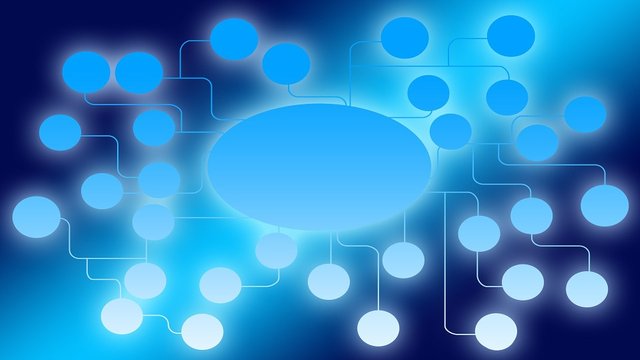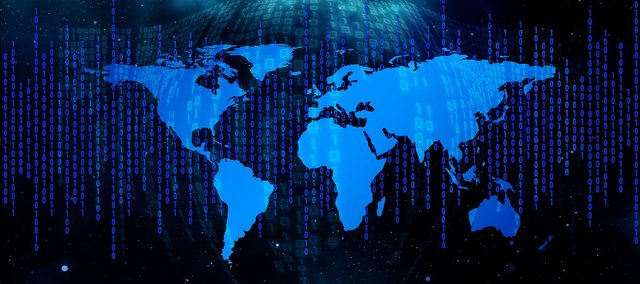Subcultures and Social Trends: Modern Tribes – The Evolution of Tribalism in the Digital Age

”In ancient history and prehistory, tribes gave visceral comfort and pride from familiar fellowship, and a way to defend the group enthusiastically against rival groups. It gave people a name in addition to their own and social meaning in a chaotic world. It made the environment less disorienting and dangerous.”
A Brief History of the Early Human Tribe

Since early human hunter-gatherers roamed the earth, the human evolutionary path has ill-equipped humans for independent survival in a hostile world. While humanity did not evolve elaborate and/or novel natural defenses, nature selected the evolutionary path which had humans form complex social structures. Some writers and researchers have suggested the human brain has been hard wired to form these social groups as a default, simply because of the evolutionary advantage. Initially the groups humans formed were based upon kinship, familial blood-ties, and generally speaking, the early hunter-gatherers lived and traveled with their extended families of three generations.
It is speculated that about 20,000 years ago, human hunter-gatherer extended families began to form clusters with other extended families and formed an organization which developed a kinship based upon shared beliefs and taboos.
The early tribe was formed.
As these tribes formed and interaction between humans became more common and at a much larger scale, the evolution of the human brain experienced a dramatic shift, resulting in the formation of high intelligence while simultaneously becoming intensely social. This caused the formation of Eusocial behavior, the blend of selfish behavior which favors individual selection and altruistic behavior which favors group selection, to form. Complex social behavior rose from the newly formed Eusocial behavior, because it,
“…required a complicated mix of closely calibrated altruism, cooperation, competition, domination, reciprocity, defection, and deceit. Humans had to feel empathy for others, to measure the emotions of friend and enemy alike, to judge the intentions of all of them, and to plan a strategy for personal social interactions…It had to build mental scenarios of personal relationships rapidly, both short term and long term. Its memories had to travel far into the past to summon old scenarios and far into the future to imagine the consequences of every relationship.”
The formation of these primitive tribes and the development of Eusocial behavior gave rise to tribalism - the implied possession of a strong cultural or ethnic identity base upon strong relations of kinship and geography with ongoing customary organization, enquiry and exchange. In a sense, the individual experiences deindividuation (when a person moves into a group which results in the loss of their individual identity and the gain of the social identity of the group); this leads the individual to experience subjective feelings of conformity, common identity and connection.
Evolution of Complex Social Structures in Human Society

Early human tribes provided the foundational social mechanisms to create ever more complex social structures, complete with their own structures, beliefs and dynamics.
Initially, the human social structure revolved around the early human tribal social form. At its core, was the concept of dynamic kinship which provided the individual both a sense of identity and the sensation of belonging. This is the foundational element of modern societies and still manifests today through displays of nationalism, fan clubs and in a more dark ways, such as bullying when an individual is unwilling to yield to the social mores of the collective.
The second evolution of human social structure was the formation of the institution. This era of human social evolution emphasized hierarchy and gave rise to the State, the military and the church by extension of Eusocial behaviors first learned from early human tribe formation.
The third evolution of human social structure was the formation of the organization, which gave rise to marketplaces, professional guilds and fair economic exchanges. This provided a new layer of complexity in an already complex human social structure.
The fourth evolution, and most current form of human social structure, is the form of the network. The form it takes is one of decentralized, dispersed groups coordinating and acting in a conjointed manner, free of the restrictions of geography, ethnicity, nationality and other earlier social structure limitations.
This fourth social evolution has so far served to strengthen society more than the prior forms. It has created a unique society of stratified tribes, composed of a decentralized array of individuals whose kinship and Eusocial behavior is no longer dependent upon, blood relations, ethnicity, geography or nationality. These stratified Neo-Tribes within the greater mass societies of nation-states have served to give rise to, strengthen and legitimize a multitude of subcultures which may not have once been accepted within the geographic and ethnographic mores of the greater social structure.
Neo-Tribalism

“…societies have repeatedly relied on four major forms of organization: kinship-based tribes, hierarchical institutions, competitive-exchange markets, and collaborative networks…Information-age networks appear to be emerging as a fourth form that is now coming into its own as a deliberate, distinctive choice.”
The information age and the rise of the internet have evolved the human social structure far beyond the limitations of kinship, geography, ethnicity and nation states. It has created a new social fabric, which allows a geographically and ethnographically diverse array of individuals to form decentralized tribes, hierarchical groups and even evolve new economies.
Decentralized Social Networks – Digital Tribes
With the rise of the information age networks, a curious thing has occurred in the human social structure evolution; the sociological concept of Neo-Tribalism has taken hold. At its heart, Neo-Tribalism would suggest humans evolved to live in tribal societies- not mass societies. Consequently, humans would form and identify with stratified tribes while maintaining loose allegiance to the larger mass-society. In essence, it’s almost as though decentralized networks have caused human social evolution to regress as a coping mechanism.
Looking for a tribe with an obscure interest? One is never further than a few clicks away for a Meetup, a Fetish Group or a Darknet solution. The same can be said of political allegiances and more mainstream social tribes, whose tribal mores are broadly accepted in the mainstream, but are geographically not supported within the mass-society (such as having a scattered, decentralized population of Democrats within a Republican stronghold).
While this decentralized fabric of mass society with its multitude of stratified tribes can serve to strengthen mass society, there are some very serious drawbacks which are beginning to take hold. The loose allegiances to the greater mass-society and stronger tribal allegiances with decentralized Neo-Tribes has, in many ways, created competing factions of tribes within the greater social fabric. The result can range from disagreement, to dissent, to civil disobedience, to violence and to radicalization (such as ISIS recruiting from Western societies such as the UK and France). The strong allegiances within the Neo-Tribes create conditions through Eusocial behavior and social bonding which cause individuals to remain committed to the Neo-Tribe, even when personal relations fray.
“…when we are surrounded by people who agree with us, our views grow more unshakable and extreme. We tend to de-legitimize those who are different, eliminating troubling cognitive dissonance without considering the possible validity of competing ideas. Such groupthink is powerful for rallying action around a single idea, but it is terrible when we need to brainstorm novel solutions.”*
“The aloof and dissociated role of the literate man of the Western world is succumbing to the new, intense depth participation engendered by the electronic media and bringing us back in touch with ourselves as well as with one another. But the instant nature of electric-information movement is decentralizing--rather than enlarging--the family of man into a new state of multitudinous tribal existences.”
New Economies of Digital Tribes – Attention as a Scarce Resource
Two independent studies performed by Robin Dunbar at the University of Liverpool and the team of H. Russell Bernard and Peter Killworth of the United States, determined the human brain has a finite capacity of individuals it can view as fully developed, complex and with whom significant ties can be associated. The total number of individuals falls between 150 and 290 individuals, with the median number at 231 individuals. These studies showed the human brain has not sufficiently evolved to understand individuals in the context of large populations. Consequently, the human brain has to develop a set of coping mechanism arrays from more early tribal hierarchical schemes, stereotypes and other much more simplified models to have some level of comprehending so many people.
This discovery illustrating the limited capacity of the human mind to form meaningful social connections illuminated the scarcity of human attention. This gave rise to what is termed the Attention Economy and identified key individuals within subcultures whom Malcom Gladwell, in his book The Tipping Point identifies as “connectors” – persons with the capacity to establish a larger than normal array of close friendships, which tie otherwise unconnected social groups together. Companies such as Klout have looked to create a sort of social “credit” report for mainstream businesses. This would permit them to target connectors specifically with special offers and discounts in an effort to exploit their ability to connect subcultures. Also, in more extreme cases, such as with extremist groups like ISIS, the social networks of connectors are exploited much the same way businesses and subcultures do to fill their ranks with new recruits.
What is clear with the rise of Neo-Tribalism is the evolution of human social connection has not stopped. As a result, a significant question still remains unanswered,
“…if the rise of network forms of organization is so significant—if it truly augurs a new stage in social evolution—should we not also be asking what other forms of organization lie behind the construction of societies?”
References
Wikipedia. “Tribalism.” N.p. September 18, 2016. https://en.wikipedia.org/wiki/Tribalism
Wikibooks. “Ancient History/Human Evolution/Neolothic Age.” N.p. September 27, 2016. https://en.wikibooks.org/wiki/Ancient_History/Human_Evolution/Neolithic_Age
P2PFoundation. “Neo-Tribalism.” N.p. October 20, 2015. http://wiki.p2pfoundation.net/Neo-Tribalism
Wilson, E.O. “Biologist E.O. Wilson on Why Humans, Like Ants, Need a Tribe.” Newsweek. April 2, 2012. http://www.newsweek.com/biologist-eo-wilson-why-humans-ants-need-tribe-64005
Knight, Steve. “Are Humans Naturally Tribal?” Be Human Project. N.d. https://behumanproject.net/why-are-we-tribal/
Ronfeldt, David. “In Search of How Societies Work.” RAND Pardee Center. December 2006. http://www.rand.org/content/dam/rand/pubs/working_papers/2007/RAND_WR433.pdf
Jeremaid. “New Tribalism - Not Your Ancestors' Campfire.” Protestant-Religion.com. May 2010. http://protestant-religion.com/article/new-tribalism-not-your-ancestors-campfire
Karoba, Sem. “What is ‘New Tribalism’ and ‘Neo-tribalism’?” Wordpress. October 9, 2009. https://skaroba.wordpress.com/2009/10/09/what-is-new-tribalism-and-neo-tribalism/
Mackenzie, Ian. “Electronic Awakening: Emergence of the Neo-Tribal Community.” Matador Network. August 23, 2012. http://matadornetwork.com/bnt/electronic-awakening-emergence-of-the-neo-tribal-community/
This was well written and I learned so much. It all makes sense. I can't believe I am the first to comment, but well done @lpfaust!
@getonthetrain, Thanks for the comment and the upvote. The article not catching could be a number of things from posting time to image selection to lack of interest by the majority towards the subject, or the series becoming stale or word choice (on my part).
I'm glad you enjoyed it and commented. I appreciate interacting with other authors and readers.
Good piece. Mostly sound from an anthropological perspective. I think it's important, however, to note that not all societies have gone through all of the stages you mentioned. Imperialism forced some societies—natives, aborigines, islanders, and several african societies—to "jump ahead.' Their inability to cope with these forced rapid shifts coupled with imperial exploitation has left the "developing world" in tatters. Other cultures—in, for example, the Middle East and Central Asia—rejected these changes altogether preferring to stick to the systems they already had while being able to defend them with force. Still others—, for example, East Asians—were hungry for change and able to adjust to these rapid shifts. Taken as a whole, we get the world we see today.
I agree with you on that point. The article was written, not with the intent of being a dissertation of 1,500 words or less about all the variables associated with how societies evolved, but rather a general overall view of how in a broad sense things evolved, grew from smaller, simpler systems into much more complex societies and the limitations of the human mind.
I do appreciate your points and agree with you there are many other pieces to the evolution of societies as a whole.
I would like also like to challenge a notion in this article. Is it known—can it be known—that we went from one stage to another? Perhaps this works more like layering, in that the previous forms never go away and, in fact, are more easily observed when the population is under stress. Perhaps neo-tribalism isn't so much a returning to what was as much as it is reaching for the security blanket that was always there, deeply buried.
It should also be pointed out that each of these shifts were accompanied by a technological singularity. A point past which no one could have imagined the paradigm shifts that would take place. Technological innovation grows exponentially, meaning that as time marches forward adjustments become harder and harder. After all, evolution happens over the long term. So, our technology may have already outpaced out biology.
Following this idea to its conclusion forces one to confront the moral conundrum of transhumanism, in all its forms.
Thanks again for the article!